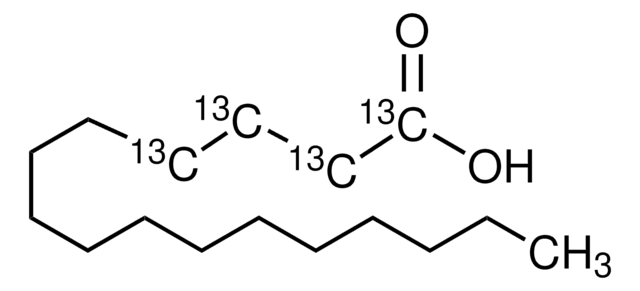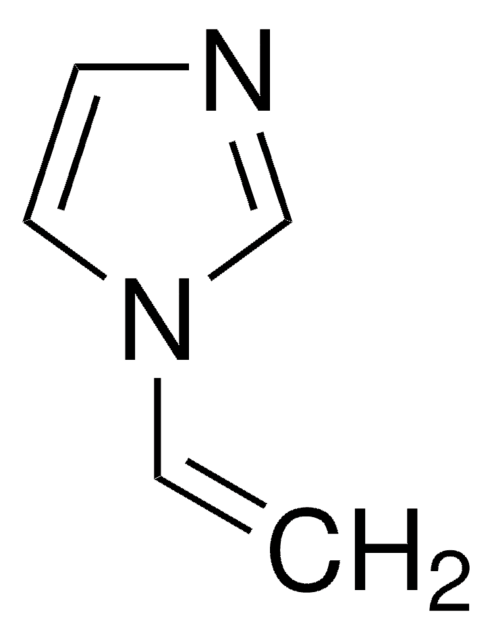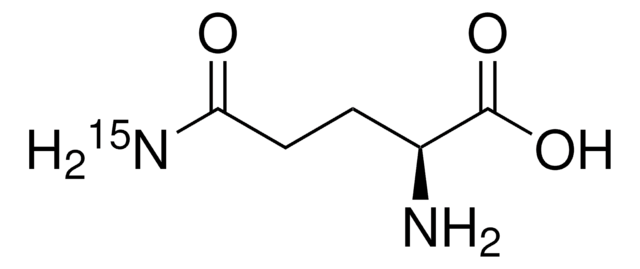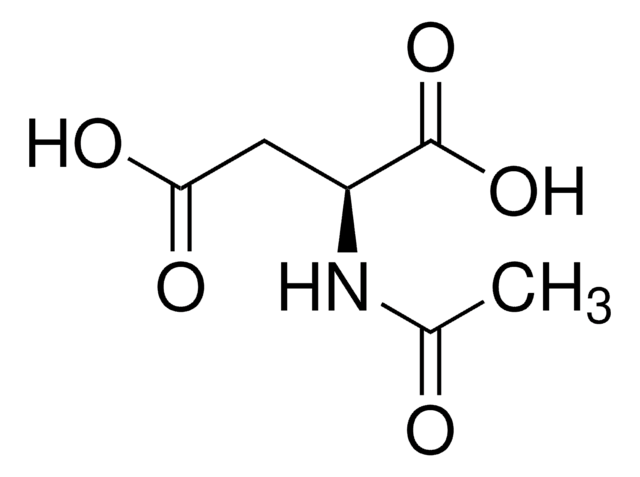604852
L-Aspartic acid-13C4
98 atom % 13C, 95% (CP)
Synonym(s):
(S)-(+)-Aminosuccinic acid-13C4, (S)-Aminobutanedioic acid-13C4, 13C Labeled L-aspartic acid
About This Item
Recommended Products
isotopic purity
98 atom % 13C
Assay
95% (CP)
form
solid
optical activity
[α]25/D +25.0°, c = 2 in 5 M HCl
mp
>300 °C (dec.) (lit.)
mass shift
M+4
SMILES string
N[13C@@H]([13CH2][13C](O)=O)[13C](O)=O
InChI
1S/C4H7NO4/c5-2(4(8)9)1-3(6)7/h2H,1,5H2,(H,6,7)(H,8,9)/t2-/m0/s1/i1+1,2+1,3+1,4+1
InChI key
CKLJMWTZIZZHCS-UVYXLFMMSA-N
Looking for similar products? Visit Product Comparison Guide
General description
Packaging
Storage Class Code
11 - Combustible Solids
WGK
WGK 3
Flash Point(F)
Not applicable
Flash Point(C)
Not applicable
Personal Protective Equipment
Choose from one of the most recent versions:
Certificates of Analysis (COA)
Don't see the Right Version?
If you require a particular version, you can look up a specific certificate by the Lot or Batch number.
Already Own This Product?
Find documentation for the products that you have recently purchased in the Document Library.
Customers Also Viewed
Our team of scientists has experience in all areas of research including Life Science, Material Science, Chemical Synthesis, Chromatography, Analytical and many others.
Contact Technical Service



![[2-(Methacryloyloxy)ethyl]dimethyl-(3-sulfopropyl)ammonium hydroxide 95%](/deepweb/assets/sigmaaldrich/product/structures/217/219/73c91e1c-0ee4-4b3d-bead-a6dc3d09d1da/640/73c91e1c-0ee4-4b3d-bead-a6dc3d09d1da.png)







